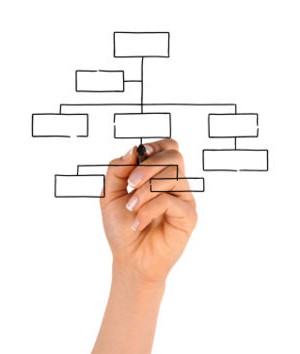UN Structure
Virtually all people have heard something about an international organization like the United Nations. Its members are almost all countries in the world, but very few people know exactly what functions it performs.
The UN structure includes 6 basicunits, whose employees are engaged in certain issues. The main goal of this organization is to maintain security and peace on our planet. In addition, the UN promotes the establishment of friendly relations between different countries, favors the development of all-round cooperation (social, economic, humanitarian, cultural). Originated in 1945. The UN system works to help people of the Earth in a variety of areas and issues.
The main constituent document of this organization is its Charter. It lists the duties and rights of its members, allowing to achieve common goals.
The UN structure is designed to achieveuniversal respect for all the rights of peoples and people. To implement the activities of the organization, each participating country shall pay mandatory contributions. The basic principle is that the richer the country, the more it contributes to the budget of the UN. So, according to the latest calculations, more than 82% of the organization's budget is paid by 16 richest countries of the Earth. This money is sent to every UN unit to carry out their duties and powers.
The UN structure includes such basicbodies such as the Security Council, the Secretariat, the General Assembly, the Trusteeship Council, the Economic and Social Council, the International Court of Justice. Each of these bodies deals with a wide range of issues, and therefore they have many subsidiary and advisory bodies.
The structure of the UN is so complex that the list of all its departments will take more than one page. Below are the leading divisions of its main bodies:
1. The following subsidiary bodies are subordinate to the Security Council:
- Sanctions Committee;
- Compensation Commission;
- International tribunals;
- Military Staff Committee;
- Peacekeeping Committee;
- The Counter-Terrorism Committee;
- Standing committees;
- Committee of 1540;
- Working Groups on Children and Armed Conflict.
In the Council there are 5 permanent (China, Russia,United Kingdom, United States, France) and 10 members elected every 2 years. It functions continuously. Each member shall preside for one month. This body has broad powers in matters of preserving security and peace. Council resolutions are mandatory for all countries. Meetings are held regularly, and in case of need extraordinary meetings are convened.
2. The UN Secretariat includes specialized agencies and bodies:
Postal Union;
- The World Bank Group;
- World organizations (health, meteorology, intellectual property, tourism);
- International organizations (maritime, civil aviation, currency fund, telecommunication union, labor organization, agricultural development);
- Organizations for Education, Science, Culture and Industrial Development;
- World Trade, Agriculture and Food Organization;
- International Agency for Nuclear Energy;
- Organization for the Prohibition of Chemical Weapons and Nuclear Tests;
- Convention on the Rights of Persons with Disabilities, on Combating Desertification, on Climate Change;
- Foundations of democracy and international partnership.
The head of the Secretariat is the Secretary General, who is elected for 5 years on the recommendations of the Security Council.
3. The General Assembly shall comprise the following organs:
- Committees;
- Advice;
- Commission;
- Agencies;
- Working groups.
At the General Assembly, participating countriesare represented by 1 vote. This body holds annual regular sessions and works with the complex structure of its subsidiary bodies. At extraordinary sessions the Assembly meets in 24 hours.
4. The Trusteeship Council has 5 members. It oversees the Non-Self-Governing Territories.
5. The Economic and Social Council has such commissions:
- on development and population;
- on narcotic drugs;
- on the status of women;
- in science and technology;
- on sustainable development;
- Crime and justice;
- on social development;
- Statistics.
This Council also includes regional economic commissions:
- in Europe;
- for Asia and the Pacific;
- in Western Asia;
- for Latin America;
- for Africa.
The Council also includes various committees, special and expert bodies.
6. The International Court of Justice consists of 15 judges elected for 9 years - representatives of different countries. His authority is ensured by the Security Council.
The UN structure includes other various specialized agencies. It includes the Peacekeeping Forces.
</ p>>




